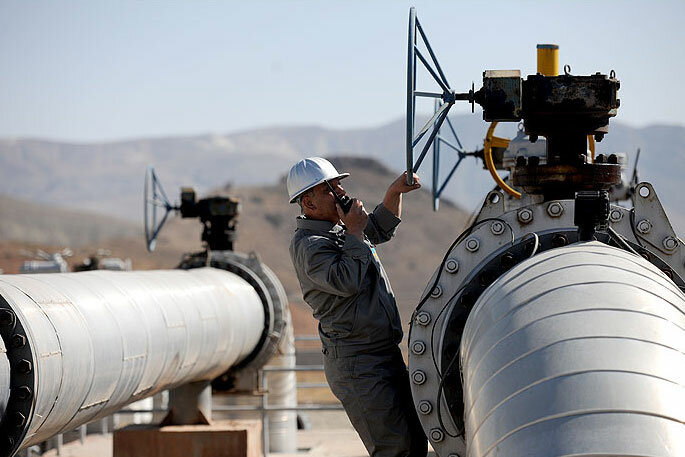Iran seeks to revive oil pipeline across Iraq to Syria amid sanctions: source

TEHRAN – Tehran has discussed with Baghdad the possibility of reopening a pipeline linking Iran and Syria through Iraqi territory to circumvent sanctions.
On July 4, Britain’s naval forces seized Iranian tanker Grace 1, and its cargo of 2.1 million barrels of oil in the Strait of Gibraltar on the pretext that the supertanker had been suspected of carrying crude to Syria in violation of the European Union’s unilateral sanctions against the war-torn country.
Tehran, however, rejected London’s claim, slamming the seizure as “maritime piracy”.
On August 16, Gibraltar’s government announced it was releasing the supertanker despite pressure from the U.S. for the vessel’s continued detainment.
Soon after the announcement, the U.S. Department of Justice unveiled a warrant for the seizure of the ship. Gibraltar, however, knocked back the request.
The United States has also threatened to aggressively enforce its sanctions on those potentially assisting the supertanker.
“The shipping sector is on notice that we will aggressively enforce U.S. sanctions,” a State Department official told Reuters last Thursday.
The Iran-Syria pipeline would link Iran with the Syrian port city of Biniyas on the Mediterranean Sea, al-Sumaria television channel reported, citing a source said to be familiar with the proposal.
The trans-Iraq pipeline would allow Iran to also sidestep the Strait of Hormuz for oil transportation and circumvent U.S. sanctions “amid growing fears [the Strait of Hormuz] may be closed in case of direct military confrontation between the United States and its allies with Iran.”
According to the source, the pipeline would consist of two parts. First, Iran would construct a new 1,000km pipeline through Iraq into Syria, going through the Nineveh plain in northern Iraq and entering Syrian territory through Deir al-Zour province, leading to the Syrian coast. Secondly, Iran would reopen the Kirkuk-Baniyas pipeline, which was shut in 1982 during the Iran-Iraq War. It was revived for three years in 2000 but was severely damaged by airstrikes during the 2003 U.S. invasion of Iraq. The proposal provides that both the construction of the pipeline and its maintenance would be carried out by Tehran.
The overall capacity of the pipeline is estimated at about 1.25 million barrels of oil per day, which equates to nearly half of Iran’s pre-sanctions crude oil exports, although it is at least 10 times less than the overall volume of crude currently transported through the Strait of Hormuz.
The source pointed out that Baghdad may not consider the project to be economically beneficial, noting that Iraq can export its own crude oil to Baniyas and on to neighboring Mediterranean countries.
However, the news outlet stated that Baghdad has not yet officially responded to Iran’s proposal. In fact, Iran previously proposed the pipeline plan to Iraq, but talks on the project were halted in 2014 when Daesh captured large swathes of land in both Syria and Iraq.
The Strait of Hormuz is a crucial shipping lane for Iran’s oil, currently transporting up to 17 million barrels of raw materials and oil derivatives per day, most of which go to the markets of Asia and Europe.
It has recently become a hot spot for international disputes after Washington decided to form a coalition to “police” the waterway following a string of mysterious attacks on oil tankers traveling through it.
Washington blamed these on Iran, although Tehran repeatedly denied responsibility, saying Washington was stoking fears, accusing the U.S. of trying to enforce its unilateral oil sanctions through military pressure.
SP/
